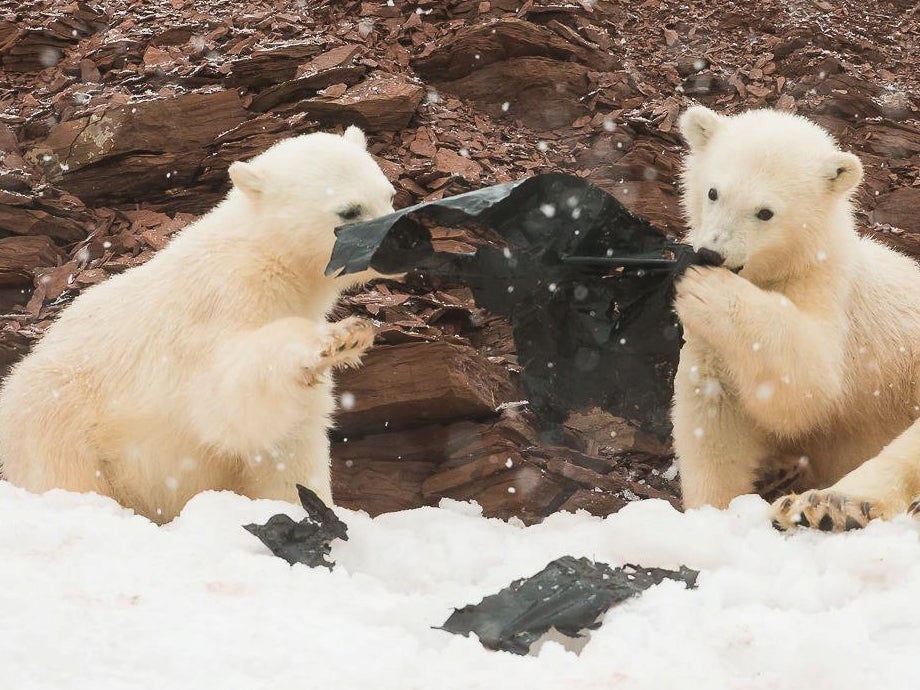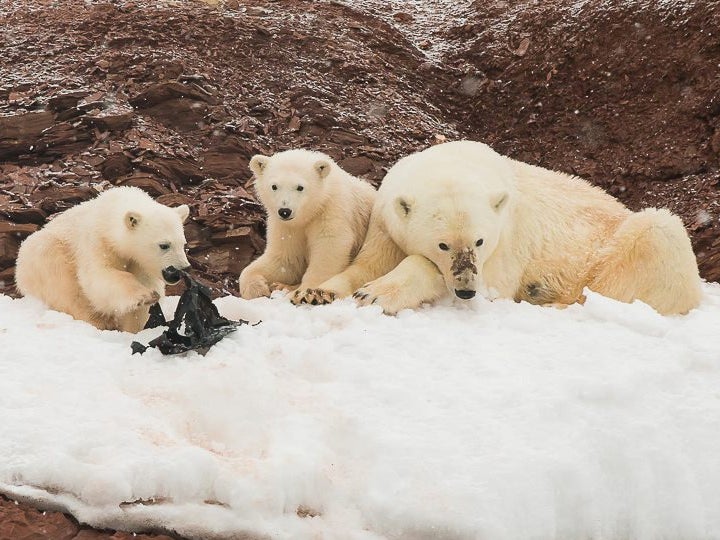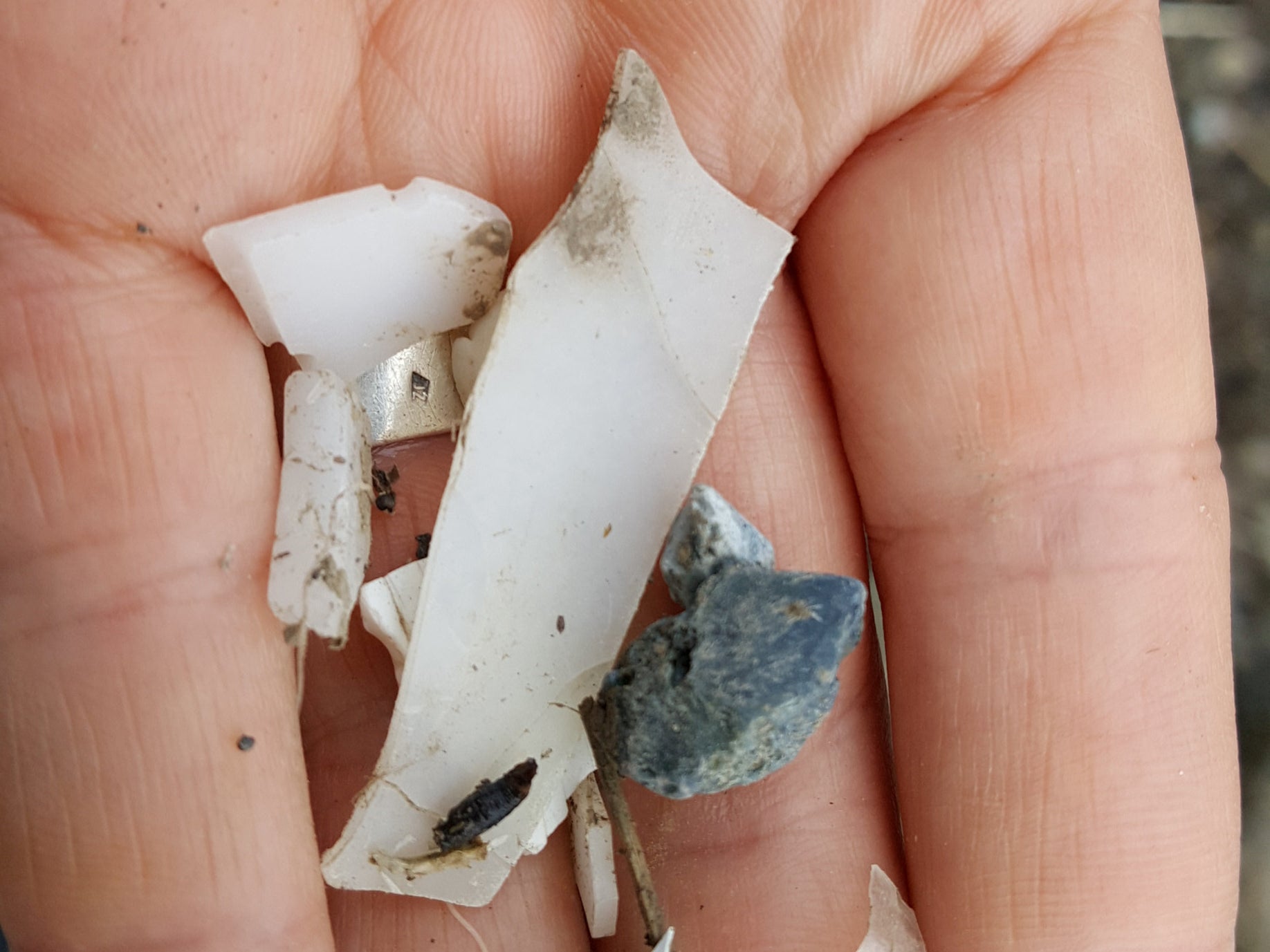Polar bears pictured playing with plastic on remote Arctic island
Researchers have found plastic material all over the isolated Svalbard region

Your support helps us to tell the story
From reproductive rights to climate change to Big Tech, The Independent is on the ground when the story is developing. Whether it's investigating the financials of Elon Musk's pro-Trump PAC or producing our latest documentary, 'The A Word', which shines a light on the American women fighting for reproductive rights, we know how important it is to parse out the facts from the messaging.
At such a critical moment in US history, we need reporters on the ground. Your donation allows us to keep sending journalists to speak to both sides of the story.
The Independent is trusted by Americans across the entire political spectrum. And unlike many other quality news outlets, we choose not to lock Americans out of our reporting and analysis with paywalls. We believe quality journalism should be available to everyone, paid for by those who can afford it.
Your support makes all the difference.Polar bear cubs have been pictured playing with a sheet of discarded plastic on a remote Arctic island.
The pair were spotted with their mother on the icy coast of Svalbard, a Norwegian archipelago about halfway between the mainland and the North Pole.
The black plastic stands out against the otherwise spotless landscape as the white-furred bears were captured pawing at it before putting it in their mouths.
The images are likely to spark yet further debate about use of the artificial products in industrialised countries following outcry about plastic pollution. Concern over microplastics and other forms of the product has spiked in recent years, particularly since the broadcast of the BBC’s Planet Earth II.
Svalbard is hundreds of miles from continental Europe and has a population of about 2,500, yet researchers navigating the freezing waters found plastic waste wherever they went.
Claire Wallerstein was part of the Sail Against Plastic team, a group of 15 Cornish scientists, artists, filmmakers and campaigners who recently returned from an expedition to the Arctic Circle.
She said: “We were very lucky to be invited to take part in this unique expedition, and had an amazing time seeing Arctic wildlife, stunning glaciers and experiencing 24-hour sunlight.
“However, it was also a very sobering experience to see just how much plastic is making its way to this incredibly remote and apparently pristine environment.”
The aim of the trip was to research the impact of plastics on the marine environment just 600 miles from the North Pole.

Ms Wallerstein added: “What we found on the beaches was sadly not so very different from what we find back home.
“There was plenty of fishing waste, but the saddest thing was just how much of the waste blighting the Arctic is the same old disposable detritus of our daily lives – plastic bottles, cotton bud sticks, cigarette ends, wet wipes, polystyrene and food packaging.”
The group sailed aboard a tall ship named the Blue Clipper, spending 10 days sampling the sea, air and beaches around the isolated coasts of Svalbard.
Although twice the size of Belgium, Svalbard’s human population is outnumbered by polar bears.
One picture captured by the group shows a team member holding a discarded plastic bag with the logo of a polar bear and the word Svalbardbutikken, a supermarket on the island.
The group trawled for microplastics in the water, and large floating plastics.
They also tested the air for microplastic fibres, listened for underwater noise pollution, and cleaned beaches.
The team found plastics on beaches at every site they surveyed, including some that must have travelled long distances.
Flora Rendell-Bhatti, a researcher from the University of Exeter, said: “As plastic pollution breaks down it is harder to identify the sources of the fragments and fibres by eye.
“Our microplastic net sampled the surface waters in areas where there is currently little research.
“Once the samples are analysed back in the UK, this data will indicate the levels of microplastic pollution in Arctic waters around Svalbard.”
With currents reaching Svalbard from both the Atlantic and Siberia, debris can arrive from far away.

Local beach cleaners have reportedly found plastic waste traceable to as far abroad as Florida, and the researchers said this would inevitably impact Arctic wildlife.
According to the team, almost 90 per cent of fulmars – a white seabird related to the albatross – around the island have been found to have plastic in their guts, with an average of 15 pieces per animal.
The expedition spent a few days in Svalbard’s capital Longyearbyen after their endeavours to find out about the initiatives under way to clean up hazardous litter from the island’s remote beaches.
SWNS
Join our commenting forum
Join thought-provoking conversations, follow other Independent readers and see their replies
Comments